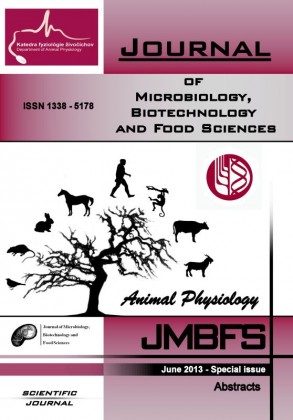THE EFFECT OF AGE OF PARENT FLOCK ON HATCHABILITY
Keywords:
hatchability, parent flock, embryonic mortality, fertilizationAbstract
This study evaluates the effect of age of parent flock on embryonic mortality and hatchability. The embryonic mortality and hatchability play a major role in economy of hatcheries and they are one of the most important indicators of reproduction.Parent flock of ISA Brown (IB) at 34, 56 and 58 weeks of age was used in the evaluation. Freshly laid eggs were incubated and analyzed for fertilization, hatchability and embryonic mortality. The flock was vaccinated against infectious bronchitis during the rearing period.
Significantly higher hatchability (P<0.05) was found at 34 weeks of age of parent flock. Decrease of hatchability was statistically significant (P<0.05) between 56 and 58 weeks of age. Unusually high embryonic mortality was found in the second third of incubation. Eggshell quality was also evaluated. Significantly lower eggshell quality – strength (P<0.01), thickness (P<0.01) and weight (P<0.05) were found in ISA Brown.
Downloads
Download data is not yet available.
Downloads
Published
2013-06-06
How to Cite
Musilová, A., LichovnÃková, M., & Hampel, D. (2013). THE EFFECT OF AGE OF PARENT FLOCK ON HATCHABILITY. Journal of Microbiology, Biotechnology and Food Sciences, 2(Abstracts special issue), 6. Retrieved from https://office2.jmbfs.org/index.php/JMBFS/article/view/7520
Issue
Section
Biotechnology
License
Copyright (c) 2013 Anna Musilová, Martina LichovnÃková, David Hampel

This work is licensed under a Creative Commons Attribution 4.0 International License.
All papers published in the Journal of Microbiology, Biotechnology and Food Sciences are published under a CC-BY licence (CC-BY 4.0). Published materials can be shared (copy and redistribute the material in any medium or format) and adapted (remix, transform, and build upon the material for any purpose, even commercially) with specifying the author(s).

